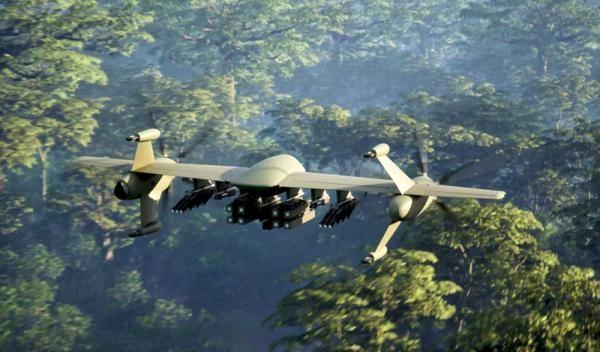Stratford, Connecticut – 6 October 2025 – Sikorsky, a Lockheed Martin company (NYSE: LMT), has introduced its new Nomad™ family of vertical take-off and landing (VTOL) uncrewed aerial systems (UAS) — a scalable range of hybrid-electric drones designed for extended endurance, runway independence, and mission versatility across land and sea.

SOURCE NAD IMAGES: LOCKHEED MARTIN
The twin proprotor Nomad design merges the agility of a helicopter with the speed and range of a fixed-wing aircraft. Capable of vertical take-off, hover, and landing, Nomad drones can also transition to efficient wing-borne cruise flight, combining operational flexibility with endurance. Each aircraft is powered by Sikorsky’s MATRIX™ autonomy technology and primarily uses hybrid-electric propulsion, while larger variants will employ conventional drivetrains.
“We use the term ‘family’ to point to a key attribute of the design — its ability to be scaled in size from a small Group 3 UAS to the footprint equivalent of a Black Hawk helicopter,” said Rich Benton, Sikorsky vice president and general manager. “The resulting Nomad family of drones will be adaptable, go-anywhere, runway-independent aircraft capable of land and sea-based missions across defence, national security, forestry and civilian organisations.”
Benton noted that the Nomad series will act as a force multiplier, complementing platforms such as the Black Hawk to retain strategic advantage in regions such as the Indo-Pacific and beyond.
Sikorsky first demonstrated the platform’s capabilities in March 2025 with its Nomad 50 prototype, featuring a 10.3-foot wingspan. The company is now developing the Nomad 100, an 18-foot wingspan Group 3 variant scheduled for its first flight in the coming months.
Designed for reconnaissance, light attack, and contested logistics missions, Nomad UAS can scale from Group 3 systems (56 to 1,320 pounds) up to Group 4/5 configurations (1,320 pounds and above). The family’s hybrid-electric architecture prioritises fuel efficiency, while the open MATRIX™ system ensures seamless integration with both rotary and fixed-wing aircraft.
Developed in collaboration with DARPA, MATRIX has already been validated in aerial firefighting, logistics resupply, and advanced air mobility trials — demonstrating robust autonomy and adaptability across operational environments.
“Nomad represents new breakthroughs for Sikorsky and the next generation of autonomous, long-endurance drones,” said Dan Shidler, director of Advanced Programs. “We are acting on feedback from the Pentagon, adopting a rapid approach and creating a family of drones that can take off and land virtually anywhere and execute the mission — all autonomously and in the hands of Soldiers, Marines, Sailors and Airmen.”





